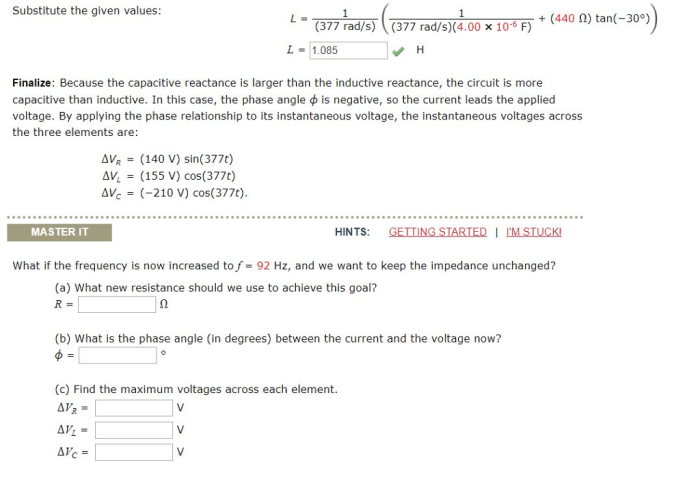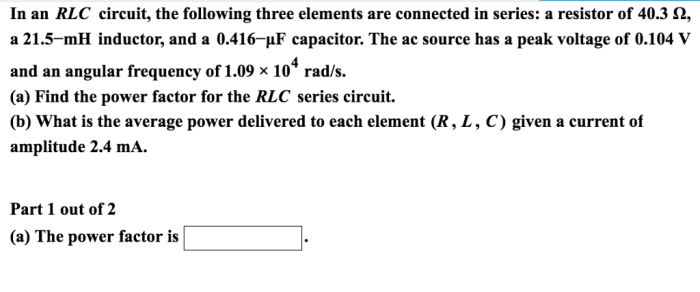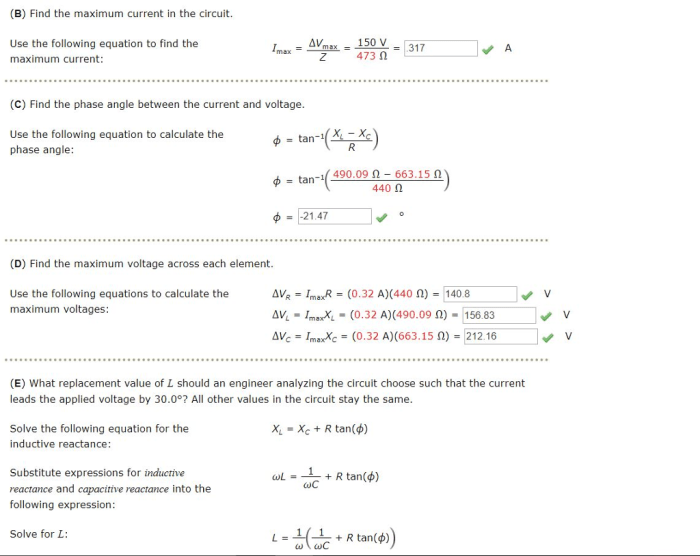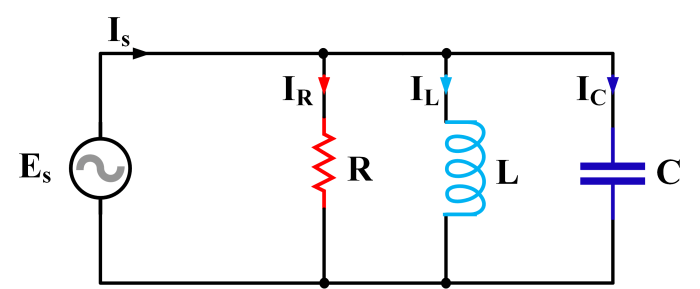Lesson 3 comprehending and analyzing series rlc circuits – In this lesson, we delve into the intricacies of comprehending and analyzing series RLC circuits. These circuits play a crucial role in various industries, from telecommunications to power electronics. By understanding their behavior, engineers can design and optimize circuits for a wide range of applications.
We will explore the concepts of impedance, resonance, and quality factor, providing a step-by-step guide to analyzing series RLC circuits. We will also discuss the frequency response of these circuits, examining bandwidth, cutoff frequencies, and resonance frequency.
1. Introduction

Comprehending and analyzing series RLC circuits is crucial for understanding the behavior of electrical systems in various applications. These circuits are composed of resistors (R), inductors (L), and capacitors (C) connected in series, and their analysis is essential for designing and optimizing electronic devices and systems.
Series RLC circuits have practical applications in a wide range of industries, including telecommunications, power electronics, and medical imaging. By understanding the principles of series RLC circuits, engineers can design and analyze circuits for specific applications, ensuring optimal performance and reliability.
2. Circuit Analysis: Lesson 3 Comprehending And Analyzing Series Rlc Circuits

Analyzing series RLC circuits involves determining the circuit’s impedance, resonance frequency, and quality factor. Impedance is a measure of the circuit’s resistance to alternating current, and it is calculated using the formula Z = √(R² + (XL – XC)²), where XL is the inductive reactance and XC is the capacitive reactance.
Resonance occurs when the inductive reactance equals the capacitive reactance, resulting in a maximum impedance. The resonance frequency is the frequency at which resonance occurs, and it is calculated using the formula f0 = 1/(2π√LC).
Quality factor (Q) is a measure of the circuit’s selectivity and is calculated using the formula Q = ω0L/R, where ω0 is the angular resonance frequency.
3. Frequency Response

The frequency response of a series RLC circuit describes how the circuit’s impedance varies with frequency. The bandwidth of the circuit is the range of frequencies over which the impedance is less than √2 times the impedance at resonance. The cutoff frequencies are the frequencies at which the impedance is √2 times the impedance at resonance.
The frequency response curve of a series RLC circuit typically shows a peak at the resonance frequency, with the impedance decreasing on either side of the resonance frequency.
4. Circuit Design
When designing series RLC circuits, engineers consider factors such as the desired resonance frequency, bandwidth, and quality factor. The values of the resistors, inductors, and capacitors are selected to achieve the desired circuit parameters.
For example, in a resonant circuit, the values of L and C are chosen to achieve the desired resonance frequency. In a filter circuit, the values of R, L, and C are selected to achieve the desired bandwidth and cutoff frequencies.
5. Simulation and Measurement

Series RLC circuits can be simulated using software tools such as SPICE and LTspice. These tools allow engineers to analyze the circuit’s behavior under different conditions and optimize the circuit design.
Hardware measurements of series RLC circuits can be performed using oscilloscopes, impedance analyzers, and network analyzers. These instruments allow engineers to measure the circuit’s impedance, resonance frequency, and quality factor.
FAQ Section
What is the significance of analyzing series RLC circuits?
Analyzing series RLC circuits is essential for understanding their behavior and optimizing their performance in various applications. By analyzing these circuits, engineers can determine their impedance, resonance frequency, and quality factor, which are crucial parameters for circuit design.
How can I calculate the impedance of a series RLC circuit?
The impedance of a series RLC circuit can be calculated using the formula: Z = √(R^2 + (XL – XC)^2), where R is the resistance, XL is the inductive reactance, and XC is the capacitive reactance.
What is the resonance frequency of a series RLC circuit?
The resonance frequency of a series RLC circuit is the frequency at which the inductive reactance equals the capacitive reactance. At this frequency, the circuit exhibits maximum impedance and a phase shift of 0 degrees.